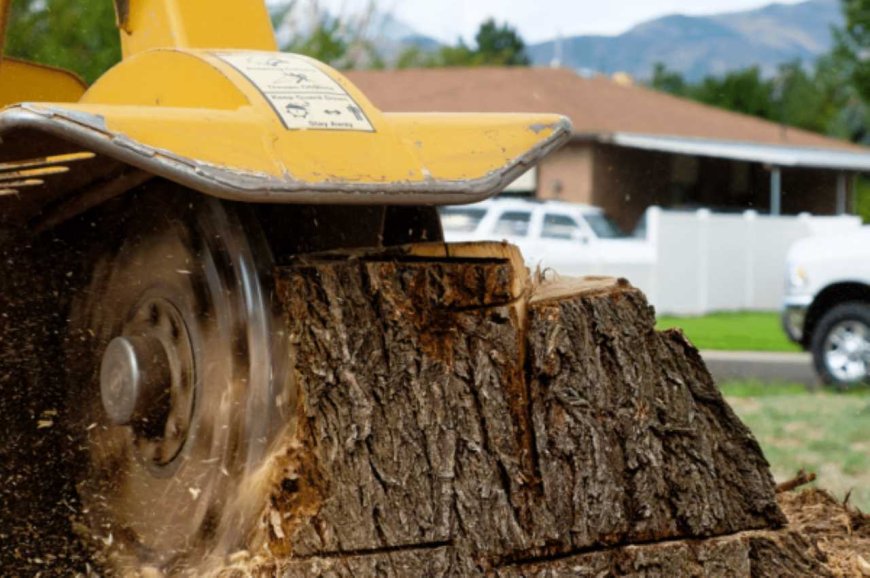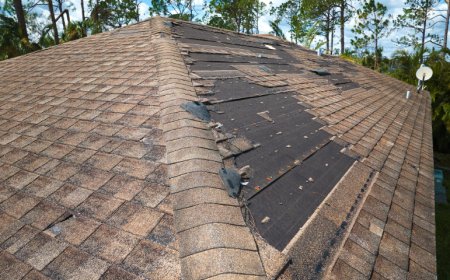The Ultimate Guide to Stump Grinding: Introduction to stump removal
Stump grinding is a smart, safe, and efficient way to reclaim your yard after a tree’s been removed. It’s better for your landscape, safer for your family, and can even help prevent unwanted pests. Whether you tackle it yourself or bring in the pros, grinding that stump down will have your lawn looking clean and refreshed in no time.

So, youve removed a tree. Now youre left with a stubborn stump staring at you like it owns the place. Thats where stump grinding comes ina fast, efficient, and eco-friendly way to get your yard looking sharp again.
What Is Stump Grinding?
Stump grinding is the process of using a powerful machine to grind the stump of a tree down into wood chips and mulch. Instead of digging the whole root system out (which can be a nightmare), a grinder shaves the stump until its level with or below the ground.
Why You Shouldn't Leave Tree Stumps Behind
Leaving a stump isnt just uglyit can attract pests, cause lawnmower damage, and even become a tripping hazard. Plus, some trees may sprout back if the stump is still alive underground.
Stump Grinding vs. Stump Removal
Lets clear up the confusion.
Key Differences Explained
-
Stump Grinding: Grinds the stump into small wood chips without removing the roots.
-
Stump Removal: Involves digging out the entire stump and root systemmessier and more invasive.
When to Choose One Over the Other
-
Choose stump grinding if you want a quicker, cleaner solution.
-
Go for stump removal if you're planning to plant another tree in the exact same spot.
Why Stump Grinding Is Important
Still debating whether to remove that old stump? Heres why its worth doing.
Improves Yard Aesthetics
Lets be honeststumps are eyesores. Grinding it away instantly makes your yard look cleaner and more spacious.
Prevents Pest Infestations
Stumps attract termites, beetles, and other critters that could eventually invade your home. Grinding it removes their potential home.
Eliminates Tripping Hazards
Kids playing in the yard, mowing the lawnstumps get in the way and can cause serious injuries if left unattended.
Stops Regrowth
Some trees are stubborn. If the stump is left, theyll send up new shoots. Grinding ends this cycle.
The Stump Grinding Process
Curious about what actually happens during stump grinding? Here's how it's typically done.
Site Inspection
A professional will assess the stumps size, location, and surrounding structures to plan the safest way to grind it.
Safety Precautions
Workers wear goggles, gloves, and ear protection. Barriers may be set up to prevent flying debris from causing damage.
Using the Stump Grinder
A machine with a rotating cutting wheel is placed on the stump. The operator lowers the wheel and grinds the wood down several inches below ground level.
Cleanup and Mulch Options
Youll be left with a pile of wood chipsmany people use them as garden mulch. Or you can ask the team to remove it for a cleaner look.
DIY Stump Grinding vs. Hiring a Pro
Can you grind your own stump? Yes. Should you? Maybe not.
Pros and Cons of Doing It Yourself
Pros:
-
Cheaper (if you already own or rent a grinder)
-
Immediate gratification
Cons:
-
Dangerous without experience
-
Time-consuming
-
Renting a grinder isnt cheap
-
Can damage your lawn or nearby plants
When to Hire a Professional Service
Hire a pro if:
-
The stump is large or near utilities
-
You dont want to risk injury
-
You value your time and lawn
Equipment Used in Stump Grinding
Not all grinders are created equal.
Types of Stump Grinders
-
Handheld grinders Great for small stumps
-
Walk-behind grinders For medium jobs
-
Riding grinders More power, faster work
-
Tow-behind grinders Used by pros for heavy-duty stumps
How They Work
These machines use a spinning blade with sharp teeth that grind the wood into small pieces, layer by layer.
Cost of Stump Grinding
So, how much is this going to cost you?
Price Factors
-
Size and width of the stump
-
Number of stumps
-
Accessibility of location
-
Whether you want debris removed
-
Soil condition
Average Costs You Can Expect
-
Small stumps: $75$150
-
Medium stumps: $150$300
-
Large stumps: $300$600
-
Per inch (diameter): $3$5
What Happens After the Stump Is Gone?
Once its ground down, what next?
Mulch and Soil Use
The leftover chips can be used in flower beds, gardens, or compost. You can also mix with soil to fill the hole.
Can You Replant on the Same Spot?
You can, but its better to wait a year or move a few feet away. Residual roots and sawdust can affect new growth.
Environmental Benefits of Stump Grinding
Believe it or not, this is a greener option.
Eco-Friendly Disposal
Instead of rotting slowly and attracting pests, the stump becomes mulchuseful and biodegradable.
Less Invasive Than Full Removal
Grinding doesnt rip up your yard like full removal. It leaves the ecosystem relatively undisturbed.
Choosing the Right Stump Grinding Service
Not all services are created equal.
Questions to Ask Before Hiring
-
Are you insured?
-
Do you charge per stump or by size?
-
Is cleanup included?
-
How deep do you grind?
Qualities of a Trustworthy Provider
-
Good online reviews
-
Transparent pricing
-
Licensed and insured
-
Experienced staff
-
Modern, well-maintained equipment
Conclusion
Stump grinding is a smart, safe, and efficient way to reclaim your yard after a trees been removed. Its better for your landscape, safer for your family, and can even help prevent unwanted pests. Whether you tackle it yourself or bring in the pros, grinding that stump down will have your lawn looking clean and refreshed in no time.
FAQs
1. How deep does stump grinding go?
Most grinders go 46 inches below ground, though professionals can go deeper if needed.
2. Will the tree grow back after grinding?
Usually no, but some aggressive species might. If you're concerned, ask for root treatment.
3. Can I use the mulch from stump grinding?
Yes! Its great for flower beds and paths. Just make sure its dry and mixed with other compost.
4. Is stump grinding safe for my lawn?
Yes, especially when done by pros who take precautions. The area may need reseeding afterward.
5. How long does the process take?
Small stumps can take 1530 minutes; large ones may take an hour or more.








































